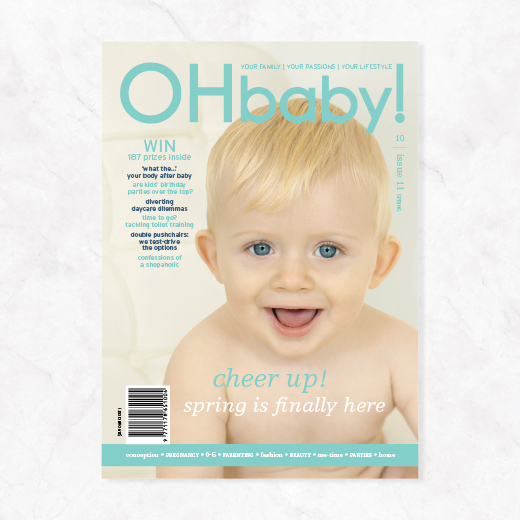Healing your pelvic floor

Many women are secretly suffering problems they simply consider "the norm". With information and exercise, you can say goodbye to pelvic floor problems and say hello to strength.
In the article "At risk of a pelvic flaw?", we looked at one of the downsides of pregnancy and birth - pelvic floor dysfunction. Urinary leakage frequently occurs as a result of a weak pelvic floor. One in three women suffer incontinence, most in silence. In this article we will examine ways you can help your pelvic floor and maybe even prevent problems in the first place.
Anatomy basics
The pelvic floor is a group of muscles, ligaments and connective tissue that literally forms the "floor" of the bony pelvic outlet. The main function of these muscles is to support the pelvic organs (the bladder, uterus and the bowel). The pelvic floor also helps to maintain continence, giving you conscious control over your bladder and bowel. It may help to imagine your pelvic floor as a small, round trampoline, which has the potential to move up and down depending on the forces exerted on it. In women, there are three passages running through these muscles. Closest to the front is the urethra (where we pass urine), the vagina is in the middle, and finally the anus or back passage. The pelvic floor muscles normally wrap around these holes, helping to keep them shut until we need to open them.
A design fault?
While the process of pregnancy and childbirth is truly a miracle, it is unrealistic to expect things "down there" will miraculously be the same afterwards! When you consider the size of a baby's head, it may not be surprising to learn that the pelvic floor muscles are stretched and weakened by the process of childbirth. An astounding 60% of pregnant women actually experience leaking of urine before birth; this is mainly due to hormonal changes and the extra weight of the baby pressing down on the pelvic floor. So having a caesarean does not make you exempt from pelvic floor problems.
Recent research has also found that urinary leakage starting before or during pregnancy is a risk factor for urinary incontinence post-birth. Certain obstetric factors such as being a first time mum, instrumental births (the ventouse or forceps), large babies (over 4kg), a prolonged pushing stage of labour and severe perineal tearing place women at even higher risk of pelvic floor damage and subsequent urinary or faecal incontinence.
Debunking the myths
Far too many women still think that the odd leak with a laugh or sneeze is a normal part of a woman's lot once she becomes a mother. We care for our family, but too often ignore symptoms in our own bodies. Pelvic floor problems are common, but they should never be considered "normal". There is always something that can be done and treatment is likely to be quite straightforward.
Protection first…
While some women do find their symptoms resolve spontaneously following delivery, there are a lot of things you can do to help this process. While the muscles and nerves mend, avoiding things that cause a "pushing down" action will help to protect your pelvic floor. You can do this by:
Remembering to squeeze, lift, and hold your pelvic floor when you cough, laugh, lift, or even blow your nose. This decreases the downwards movement which could stress the healing tissues.
Avoid heavy lifting where possible. If someone else can lift things like the pram or groceries, let them do it! If you must lift anything heavy, then remember to squeeze your pelvic floor, as mentioned above.
Avoid getting constipated. No one likes to admit to this one, but it is common during pregnancy and following birth. Eating lots of fresh fruit and vegetables, wholegrain breads and cereals, and drinking 6-8 glasses of water each day should help. If you are having trouble, then it is worth speaking with your pharmacist or GP; there are several things you can take that work really well in the short-term.
Don't strain when opening your bowels. Instead, sit upright on the toilet and look forwards while placing your forearms on your thighs and your feet close to the toilet (or on a small stool) with your heels up. Also, let your tummy relax and gently push, but don't strain.
Aim to keep within the healthy weight range and try not to gain too much weight during pregnancy. In addition to putting you at higher risk of almost all major diseases, being overweight puts excess downwards pressure on the weakened pelvic floor. The best (and only sensible way) to do this is with regular exercise and a healthy eating plan. The term "eating for two" is a misnomer - you only require a small number of extra calories while pregnant or breastfeeding, roughly the equivalent of a banana and a tub of low-fat yoghurt. The focus should be on getting an adequate supply of nutrients daily by eating a variety of foods.
Pelvic floor strengthening
Women frequently tell me that they have done pelvic floor exercises, but they didn't work. However, I usually discover that they were never taught how to do the exercises correctly, or they only did them for a few weeks. Supervised pelvic floor muscle training has been proven to be extremely effective, with a very high cure rate. However, just like strengthening any other part of your body, the exercises need to be done correctly on a regular basis, and continued to maintain benefits.
Finding your pelvic floor
Pelvic floor exercises can be a little tricky at first, especially if you have recently had a baby. As the muscles are hidden from view, it is not always easy to be sure you are exercising them correctly.
Begin by lying down on your side or on your back, with your feet on the floor and your knees bent. Ensure that your bottom, thighs, and tummy are relaxed. Take a few deep breaths in and out to relax your breathing and your body.
Now squeeze and lift inwards and upwards around the vagina (as if you were trying to stop the flow of urine). Make sure there is no downwards movement.
You are aiming to feel your pelvic floor lift. If your muscles are weak, then this movement may be very small or hard to feel.
Now try squeezing around your back passage as if you were trying to prevent wind from escaping. You should notice that the same muscles are working to do this. Some women find it useful to imagine squeezing a tampon up higher inside their vagina.
Ensure you "relax" and let go of your muscles in between each squeeze and lift.
You might find that your lower tummy flattens slightly - this is normal as the deep abdominals work together with your pelvic floor. But don't pull your tummy in tightly. You spine should stay still and not move and you should continue to breathe quietly while you are "lifting" your pelvic floor.
Once you can do this in lying, you might like to try it in sitting or standing. Standing and sitting are harder than lying as the pelvic floor has to work against the effects of gravity.
After birth, when your muscles are weakened, it's important to do pelvic floor exercises regularly each day. Once you feel confident locating your muscles, aim to:
Hold each lift and squeeze about 4-5 seconds. Remember to keep breathing during your lift. Then rest for a few seconds in between each squeeze. Now repeat this 6-8 times. Ensure you squeeze as strongly as you can, without using the muscles of your bottom or holding your breath.
Then try 8 fast contractions (squeeze and lift quickly and tightly, and then let go).
Then after a short rest, repeat this again (2 sets overall). Aim to do this all at least 3-4 times per day. This may seem a lot, but it should only take around two minutes, so that is less than 10 minutes daily!
If you find this difficult and cannot feel your muscle "relax" after each squeeze, then you may need to start with even shorter holds (2-3 seconds) and even less repetitions (4-5).
As your pelvic floor muscles get stronger, you can gradually increase the length of your holds and your repetitions. A good goal would be to aim for around eight 10-second holds. Initially, try to set aside a few minutes each day to really focus on the exercises. Once you feel confident, you could try the exercises while feeding your baby, in the shower, after going to the toilet, while watching TV, or even during sex!
Remember: Keep breathing quietly, ensuring you don't hold your breath. Make sure other muscles in your inner thighs and bottom aren't helping out by ensuring you keep them relaxed. It is important that you feel a sensation of "letting go" when you relax your muscles.
Choose exercise carefully
As mentioned, being overweight is a risk factor for pelvic floor weakness as it places extra stress on these tissues. However, if you have recently had a baby, or think your pelvic floor may be weak, then it is important that you avoid exercises that may place extra stress on your pelvic floor.
I see many very conscientious women engaging in exercises like jogging and abdominal crunches, unknowingly making their symptoms worse. The main problem with these exercises is that they increase the pressure inside the abdomen which exerts a downwards force on an already weakened pelvic floor - this can potentially hinder the healing process, and may lead to worsened leaking or prolapse symptoms.
Other common exercises that should be avoided postnatally (or if you have a weak pelvic floor) include: Running, jogging, jumping sports like netball or aerobics, weight training (specifically exercises like loaded squats or shoulder presses) and many abdominal exercises like sit-ups, crunches, and certain pilates moves.
Unfortunately, in Australia and New Zealand there is no regulation ensuring personal trainers or fitness instructors have training in this area. If you are unsure about your symptoms, pelvic floor exercises, or the type of exercise that is appropriate for you, then it would be beneficial to visit a women's health/continence physiotherapist. They will be able to diagnose your condition, prescribe and guide an individualised pelvic floor exercise programme, and advise the most suitable sorts of exercise for you.
In general, low-impact exercises such as swimming and walking are safer for pelvic floor recovery. Regular low-impact exercise combined with gentle core and pelvic floor exercises will be of benefit to all women who are pregnant or have ever had a baby. It is never too late to start. So grab the pram, call a friend and go for a stroll.
When you stop to feed baby or rest at the top of a hill, why not do some pelvic floor exercises? You'll be doing both yourself and your pelvic floor a big favour. You might even find out that your friend has been struggling with her pelvic floor and could benefit from some advice!
references
* Australian Institute of Health and Welfare. "Australia's health 2008." Cat No, AUS99, Canberra. Available at www.aihw.gov.au/publications/index.cfm/title/10585
* Chiarelli, P and Brown, W. "Urinary incontinence in Australian women: Prevalence and associated conditions." Women and Health 29.1 (1999): 1-14.
* Dumoulin, C. "Postnatal pelvic floor muscle training for preventing and treating urinary incontinence: where do we stand?" Current Opinion in Obstetrics and Gynaecology 18 (2006): 538-43.
* Neumann, PB, Grimmer, KA, Grant RE, and Gill, VA. "Physiotherapy for female stress urinary incontinence: a multicentre observational study." Australian and New Zealand Journal of Obstetrics and Gynaecology 45 (2005): 226-32.
* Wesnes SL, Hunskaar S, Bo K, and Rortveit, G. "The effect of urinary incontinence status during pregnancy and delivery mode on incontinence post-partum. A cohort study." BJOG 116 (2009): 700-07.
Further help
* Check out the New Zealand Continence Association website: www.continence.org.nz or call the helpline on 0800 650 659. They can provide fantastic free pamphlets and/or contact details of all continence advisors and physiotherapists.
* In Australia contact the National Continence Helpline on freecall 1800 33 00 66 or visit www.continence.org.au. The National Continence Helpline is staffed by a team of Continence Nurse Advisors who provide confidential information and advice about bladder and bowel control problems. The Helpline also provides a wide range of free information resources and the contact details for local continence clinics.
* Speak with the healthcare professional who is helping you after the birth of your baby.
* Check out the FiLiFit website for free information on pelvic floor exercises: www.filifit.com or to order a post-pregnancy exercise DVD.
Lisa Yates is an experienced physiotherapist and personal trainer with a special interest in women's health. As a mother of two young girls, Lisa has personally experienced many obstetric risk factors for pelvic floor dysfunction and is happy to report that her pelvic floor is still in good shape! She is passionate about education and in 2008 co-founded FiLiFit to help nurture healthy lifestyles. The Core & The Floor (available from www.filifit.com) has a strong pelvic floor focus and is New Zealand's first post-pregnancy exercise programme designed to help women safely get the results they want.

AS FEATURED IN ISSUE 11 OF OHbaby! MAGAZINE. CHECK OUT OTHER ARTICLES IN THIS ISSUE BELOW

















